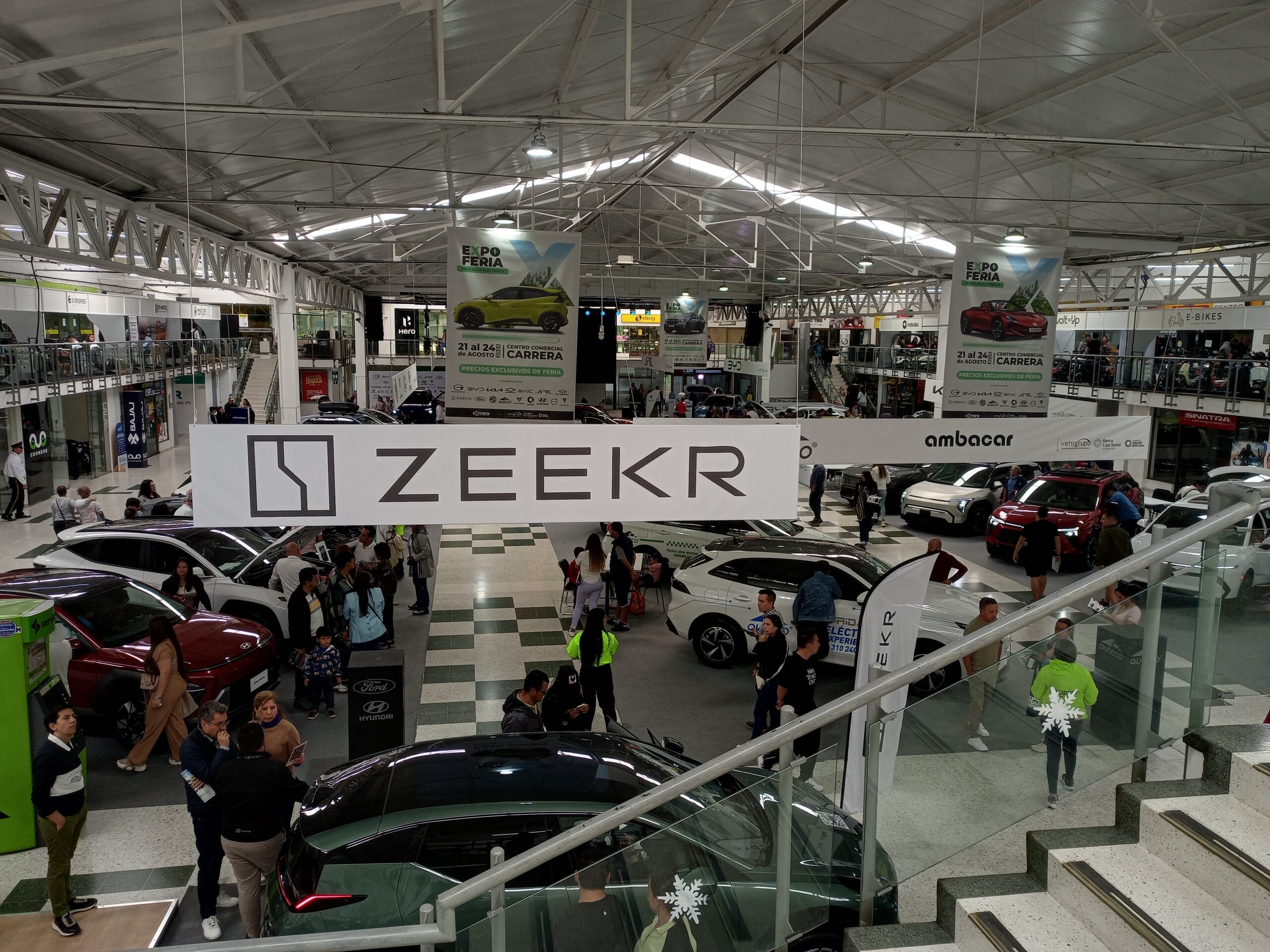Support CleanTechnica’s work through a Substack subscription or on Stripe.
In yet another in a series of demonstrations that the vehicle electrification movement is unstoppable, the National Electric Vehicle Infrastructure program has dusted itself off and risen from the grave. The NEVI program provides federal funds to fill gaps in the nation’s public EV charging network, helping to motivate EV adoption. US President Donald Trump tried to kill it off earlier this year but the initiative is still alive and kicking.
EV Charging & The NEVI Program
For those of you new to the topic, the $5 billion, 5-year NEVI program launched in 2022 with funding from the 2021 Bipartisan Infrastructure Law. The program aims to accelerate the buildout of a national network of fast-charging stations along major US arteries. Under the program, states are responsible for identifying suitable locations, coordinating their own priorities with the program’s guidelines.
For reasons best known only to themselves, some states initially declined to apply for their share of the funding. Others were behind the EV charging curve in terms of staffing and other resources, needing more time to identify suitable locations. Nevertheless, as of July 2024, all 50 states had their FY24 deployment plans in hand, and eight states already had NEVI-funded charging stations up and running for a total of 61 ports. Another 2,500 ports were in the pipeline. By the time Trump took office in January the NEVI program was already well under way.
Rather than letting a sleeping dog lie — after all, nobody was forcing EV-reluctant states to use their share of the funding — Trump summarily suspended the NEVI program in February.
The NEVI Program Lives To See Another Day
EV charging advocates fought tooth and nail to restore the program. The effort included a multistate lawsuit filed on August 1, listing Transportation Secretary Sean P. Duffy as a defendant along with Gloria M. Shepherd, administrator of the Federal Highway Administration. Coincidentally or not, on August 11 Duffy announced new NEVI guidelines under the mysteriously awkward headline, “President Trump’s Transportation Secretary Sean P. Duffy Unveils Revised NEVI Guidance to Allow States to Actually Build EV Chargers.”
That split infinitive sent many an AP English teacher charging out of the classroom, spitting nails and shaking off chalk dust. Be that as it may, the emphasis on “actually” seems to be Trumpspeak for removing clean energy guidelines from the NEVI program.
Clean energy or not, in the latest sign that NEVI is back on track Wisconsin has dropped word that it plans to deploy NEVI funds to fill an EV charging gap in the northern part of the state. With only four high-speed ports the new charging station is not a particularly big installation, but its location at a Culver’s restaurant does illustrate how the nation’s retail food service industry is supporting the vehicle electrification movement.
Culver’s joins a long and growing list of quick-serve, fast-food, grab-and-go food merchants, and travel plazas where EV charging encourages customers to linger on the premises and potentially spend more money buying nick-nacks and travel supplies along with food and beverages.
More NEVI Action Brewing
Another state to watch is Kentucky. As one of the plaintiffs in the August 1 lawsuit, Kentucky Governor Andy Beshear was particularly happy to announced that it has recovered $17.8 million in NEVI funds so far.
“When Washington makes Kentucky a promise, I’m going to do everything I can to make sure they keep it,” Gov. Beshear said in a press statement. “I am glad a portion of these funds have returned to our state so we can keep moving forward for our people, our economy and our future.”
Kentucky still has a way to go before it recovers its full share of funding. The state’s initial allocation under the five-year NEVI program totaled $69.5 million. Almost half that amount, $32 million, was held back by the Trump administration. Despite the clawback the state still managed to make considerable progress on its public charging station buildout.
“Kentucky has awarded 46 fast-charging stations statewide with five stations open and three additional stations under construction,” the Governor’s office explains. “All of the awarded stations are expected to open in 2026. They represent an investment of $31.6 million in obligated NEVI federal formula funds.”
That’s peanuts compared to what comes next. If all goes according to plan, Kentucky expects to have almost 50 NEVI-funded stations up and running by the end of next year, located along interstate highways and parkways. Under state guidelines, each station is equipped with at least four ports of at least 150 kilowatts or more, compatible with most EVs. The stations must also be accessible to the driving public on a 24/7 basis.
“Kentucky is a leader in automotive production and is the EV battery production capital of the United States, helping create thousands of high-quality jobs for Kentuckians,” the Governor’s office adds, noting that the state has pulled in $13.5 billion in EV-related investments over the years.
Here Comes Pennsylvania, Again
Another EV-ready state is Pennsylvania, which also joined in the August 1 lawsuit. On October 3, Pennsylvania celebrated the opening of its 20th NEVI-funded fast charging station. With the new station in hand, Pennsylvania is the first state to receive a “Full Build-Out Certification” under the August 11 program guidance.
The certification enables states to apply their NEVI funds beyond interstate highways, to include connections with other transportation corridors and communities. “Projects funded from the Corridor Connections program will improve range confidence for drivers who are considering travel with an EV across and throughout the Commonwealth,” explains PennDOT, the state’s Department of Transportation.
Whoa if true. The solicitation period will begin on October 7 and PennDOT anticipates that up to $20 million in funding will be available to support around two dozen projects, covering 1,000 miles of roadway. The program will get under way next year after submissions close on January 30.
EV Charging Is Here To Stay, And So Are EVs
NEVI watchers can keep up with all the action courtesy of the National Association of State Energy Officials, which has launched a 50-state NEVI dashboard.
Meanwhile, the premature death of the federal EV tax credit has caused much hand-wringing among vehicle electrification advocates. However, the EV die is already cast, with Ford and General Motors among the automakers already in the thick of plans to introduce more affordable EVs, helping to offset the evaporation of the tax credit.
Other stakeholders are pitching in to keep the EV momentum rolling along, including the Costco Auto Program branch of Costco. In an email to CleanTechnica this week, Costco Auto let word slip that its “Costco member value” arrangement for purchasing or leasing Chevrolet, GMC, and Cadillac EVs will be extended through January 2, 2026.
The arrangement provides a $1,000 incentive for Gold Star and Business members, and $1,250 for Executive Members. EV-curious? Check out Costco’s EV incentives here.
Photo (cropped): Fresh activity is brewing in the US public EV charging station network as the federal NEVI funding program kicks back into life (courtesy of US Department of Energy).
 Sign up for CleanTechnica’s Weekly Substack for Zach and Scott’s in-depth analyses and high level summaries, sign up for our daily newsletter, and follow us on Google News!
Sign up for CleanTechnica’s Weekly Substack for Zach and Scott’s in-depth analyses and high level summaries, sign up for our daily newsletter, and follow us on Google News!
Have a tip for CleanTechnica? Want to advertise? Want to suggest a guest for our CleanTech Talk podcast? Contact us here.
Sign up for our daily newsletter for 15 new cleantech stories a day. Or sign up for our weekly one on top stories of the week if daily is too frequent.
CleanTechnica uses affiliate links. See our policy here.
CleanTechnica’s Comment Policy





